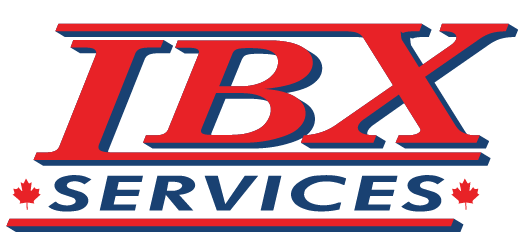Due to the recent temperature changes, mold growth can also appear in your home. This may be the ideal moment to contract a business to undertake a mold inspection in your Toronto house.
Did you know that homeowners frequently ignore a number of concealed locations for the growth of mold? The first step in learning how to detect mold in your house is comprehending how and why it grows.
What Causes Mold to Form?
Mold is a fungus that can grow on anything if the correct circumstances are present. Mold naturally decomposes decaying organic stuff as a microbe. When a cluster of mold spores develops within a house, it can pose a major health risk, especially to people who have respiratory illnesses.
Spores of mold are present everywhere. These spores will multiply and spread when oxygen, moisture, and warm air come together. Mold is now detectable through sight, smell, and even touch as wetness on walls and furniture.
What Are Some Unexpected Hidden Locations Where Mould May Grow?
Mold that is visible is simple to remove, but mold spores can grow in even the most hidden areas of a house because they prefer darkness. Beyond what the eye can see, mold growth must be looked for.
Basement Area
Even in finished basements, the lowest point in a home is one of the most frequent and noticeable locations for mold growth. When it absorbs moisture, insulation used behind fake walls in the basement frequently serves as a breeding ground for mold spores.
Be sure there are no water leaks or condensation under or around ductwork, window frames, sump pumps, or near pipes. If the home’s foundation has cracks, there can be too much moisture accumulating in some places.
Behind the Walls
You won’t be able to see mold growth behind the walls unless you have x-ray vision, however, there are a few things to look out for. Keep an eye out for musty smells in the rooms, condensation drips on the walls, or damaged or peeling wall paint.
A mould problem behind the walls might be indicated by bubbling wallpaper in areas that are frequently kept warmer, such as bedrooms. Moreover, the wall will feel moist as a result, and dark stains may appear.
The Kitchen
For mold to flourish, the kitchen can be like a theme park. Examine the objects on the table and the appliances more closely in addition to looking under the sink, in the garbage bin, and around the pipes.
Check the breadbox, microwave, dirty dishes, wet sponges, cutting boards, and areas near the stove and microwave. Don’t forget to look inside the fridge as well! The refrigerator’s seal strip and the interior of the crisper drawers are typical places to watch out for.
The Sink or Toilet
The bathroom is another notorious haven for mold. High humidity and moisture in the air brought on by hot showers provide the perfect conditions for the formation of mold. Mold may be visible on the countertops and around the sink, but check closer! Mold can grow on the interior of the toilet tank as well as on the walls, cupboards, faucets, windowsills, and other surfaces.
The Shower or Bathtub
Check the shower curtains, bath sponges, shampoo bottles that have been opened, and tub edges for mold when inspecting the bathroom. Toys for kids that have been in the bath should also be checked because mold spores can grow on moist surfaces.
It might be challenging to maintain a dry shower and bathtub, especially around the taps and showerhead where mold spores grow quickly. Examine the grout lines for mold if the shower area is tiled.
Inside the Toothbrush Holder
Have you recently checked or cleaned your toothbrush holder? If not, be ready since the wet, dark environment is ideal for the growth and development of mold spores. Mold spores are fed as a result of the water from the toothbrush head dripping down the handle and into the holder. Due to its infrequent drying, a soap bar dish can potentially develop mold.
Under Your Door Mats
Mold spores can be found nesting inside doormats. Moisture accumulates underneath shoes and boots all year long, bringing muck, snow, and rain with it. Decorative mats frequently absorb moisture and retain it in their fibers, which fosters the growth of mold in a dank, dark atmosphere.
In Your Dishes
Mold spores can grow on dirty dishes left in the sink, as was previously described. If clean dishes are not properly dried before storage, mold can grow on them. When putting the dishes in a dark area after the dishwasher unloading, make sure the plates, glasses, and utensils are totally dry.
In Your Air-Conditioner
Built-in air conditioning typically needs routine maintenance, which can help you find mold in its earliest stages. Mold should also be checked in any homes with window air conditioners. When the machine is running, mold spores within can quickly spread into the surrounding air.
Under Water Heaters
The area around and beneath the home’s water heater or tank is susceptible to the growth of mold spores, whether it is in the basement or a closet in the hallway. Water and condensation can build and collect even when drains are used. Drains and storage containers are readily clogged or rusted, enabling water to leak.
Who to contact for Mold Inspections and Mold Removal Services?
Trust the mold removal specialists from IBX Services to conduct a comprehensive home inspection if you notice or suspect mold growth in your residence. A visual inspection of the home’s interior and exterior as well as a thorough structural inspection will be carried out by our qualified and trained technicians.
Get rid of significant mold growth by contacting IBX Services’ mold removal experts via phone at (416) 252-5959 or via email at [email protected].


